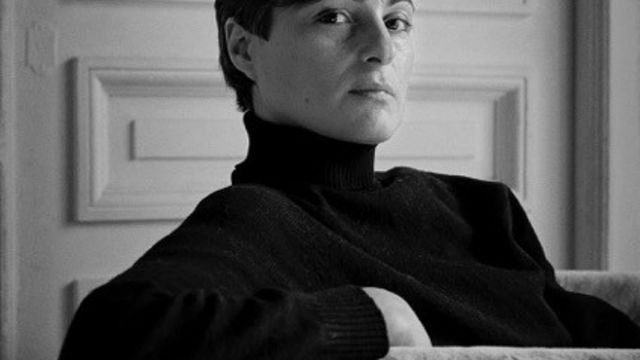
Liliana Maresca
Born in Buenos Aires in 1951, Liliana Maresca studied at the Escuela Nacional de Cerámica with the painter Renato Benedetti, the sculptor Emilio Renart (1925–1991), and the draftsman Miguel Ángel Bengochea (1945–2015). She began making objects with found materials in 1982. In 1983 she completed her series Liliana Maresca con su obra (Liliana Maresca with her work), in which she was photographed in the nude by the artist Marcos López (b. 1958). Two important happenings mark the year 1985. Along with Ezequiel Furgiuele, with whom she formed Grupo Haga, Maresca made a scarf measuring 328 feet long, composed of rags found in the neighborhood of El Once; the work was titled Una bufanda para la ciudad de Buenos Aires (A scarf for the city of Buenos Aires). Always opting to show her sculptures and installations in unconventional settings and with unexpected materials, Maresca organized the group show Lavarte at a laundromat. Considered to be the "cultural communicator of the eighties" by her peer Marcia Schvartz (b. 1955), Maresca created sculptures and installations that broke free from any sense of preciousness.
In 1990 the artist presented the installation Recolecta (Collects), which had as its main theme a shopping cart like those pushed by vagrants on city streets. She also made replicas of the cart, which she called a "national symbol." Painted all white or in gold and silver, the carts were meant to critique the suffering of the socially marginalized.
Her most conceptual work took place in 1992 with the installation Espacio disponible (Space available) at the Centro Cultural Recoleta. For this piece Maresca placed a signboard advertising the availability of the space "for any purposes" and included her name and telephone number and two dates. A few months later and with the help of colleagues, Maresca published in El Libertino fourteen erotic photographs of herself under a title suggesting a connection to the ad she had earlier presented and again including her name and telephone number. Both works revealed her interest in the performativity of the language of advertising and the expectations placed on the artist as a maker of objects and fantasies. Maresca died of AIDS in 1994, just a few days after the opening of her retrospective at the Centro Cultural Recoleta in Buenos Aires.
—Marcela Guerrero
Selected Solo Exhibitions
1984 Objetos, offices of the magazine El Porteño, Buenos Aires
1989 No todo lo que brilla es oro, Galería Adriana Indik, Buenos Aires
1991 Wotan-vulcano, Casal de Catalunya, Buenos Aires
1994 Frenesí: Retrospectiva, 1984–1994, Centro Cultural Recoleta, Buenos Aires
2008 Liliana Maresca: Transmutaciones, Museo Municipal de Bellas Artes Juan B. Castagnino, Rosario, Argentina
Selected Bibliography
Almerini, Katia. "Radicalism and Subversion in the Argentinean Eighties: The Case of Liliana Maresca." Paper presented at the Annual International Conference of the Royal Geographical Society, London, September 3, 2015.
Gainza, María. "Liliana Maresca." Artforum 47 (September 2008): 472.
Hasper, Graciela. Liliana Maresca documentos: Selección de textos publicados e inéditos y de otros documentos sobre Liliana Maresca. Buenos Aires: Libros del Rojas, Universidad de Buenos Aires, 2006.
Lauría, Adriana. "Articulación entre arte, medios y discurso crítico en la obra de Liliana Maresca." In Arte y recepción: VII jornadas de teoría e historia de las artes, 293–98. Buenos Aires: Centro Argentino de Investigadores de las Artes, 1997.
———. Liliana Maresca: Transmutaciones. Buenos Aires: Centro Cultural Recoleta, 2008.


